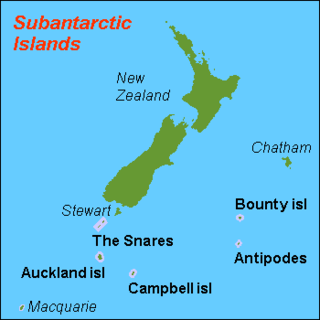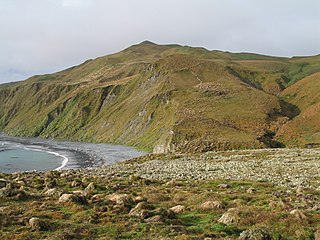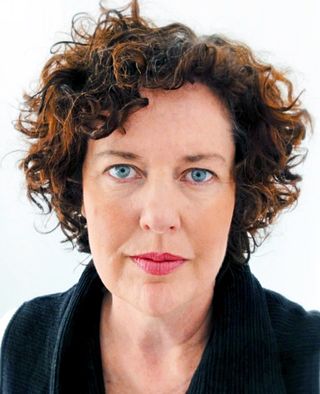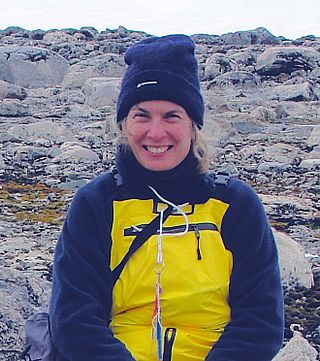
The Antarctic is a polar region around Earth's South Pole, opposite the Arctic region around the North Pole.
The Australian Antarctic Division (AAD) is a division of the Department of Climate Change, Energy, the Environment and Water. The Division undertakes science programs and research projects to contribute to an understanding of Antarctica and the Southern Ocean. It conducts and supports collaborative research programs with other Australian and international organisations, such as the Bureau of Meteorology and Geoscience Australia, as well as administering and maintaining a presence in Australian Antarctic and sub-Antarctic territories.

Macquarie Island is an island in the southwestern Pacific Ocean, about halfway between New Zealand and Antarctica. Regionally part of Oceania and politically a part of Tasmania, Australia, since 1900, it became a Tasmanian State Reserve in 1978 and was inscribed as a UNESCO World Heritage Site in 1997.

The New Zealand Subantarctic Islands comprise the five southernmost groups of the New Zealand outlying islands. They are collectively designated as a UNESCO World Heritage Site.

The Antipodes Subantarctic Islands tundra ecoregion, within the tundra biome, includes five remote island groups in the Pacific Ocean south of New Zealand: the Bounty Islands, Auckland Islands, Antipodes Islands and Campbell Island groups of New Zealand, and Macquarie Island of Australia.

Mawson's Huts are the collection of buildings located at Cape Denison, Commonwealth Bay, in the far eastern sector of the Australian Antarctic Territory, some 3000 km south of Hobart. The buildings were erected and occupied by the Australasian Antarctic Expedition (AAE) of 1911–1914, led by geologist and explorer Sir Douglas Mawson.

The Macquarie Island Station, commonly called Macca, is a permanent Australian subantarctic research base on Macquarie Island, situated in the Southern Ocean and located approximately halfway between mainland Australia and Antarctica, managed by the Australian Antarctic Division (AAD). The station lies at the base of Wireless Hill, between two bays on the isthmus at the northern end of the island.

Pleurophyllum hookeri, also known as the silver-leaf daisy or sage-green rosette herb, is a herbaceous plant in the family Asteraceae, a megaherb native to the subantarctic Auckland and Campbell Islands of New Zealand and Australia’s Macquarie Island. It grows up to 900 mm in height and has crimson button flowers and long, silky, silver leaves, with a large carrot-like tuber and long roots. It also has the unusual feature of a vertically contractile stem, most of which is underground, which serves to keep the leaf rosette close to the ground surface and the plant anchored securely against the very strong winds typical of subantarctic islands. Prior to the successful eradication of introduced mammals on Macquarie Island in 2011, it had been threatened there by black rats and European rabbits.

Galium antarcticum, commonly known as Antarctic bedstraw or subantarctic bedstraw, is a species of flowering plant in the coffee family. It has a largely subantarctic range.

The wildlife of Antarctica are extremophiles, having adapted to the dryness, low temperatures, and high exposure common in Antarctica. The extreme weather of the interior contrasts to the relatively mild conditions on the Antarctic Peninsula and the subantarctic islands, which have warmer temperatures and more liquid water. Much of the ocean around the mainland is covered by sea ice. The oceans themselves are a more stable environment for life, both in the water column and on the seabed.

Patricia Margaret Selkirk, is an Australian plant biologist and ecologist. Her career has focused on Antarctic and subantarctic terrestrial ecosystems and she is recognized as being a pioneering female Australian Antarctic scientist.

Dana Michelle Bergstrom is a senior researcher at the Australian Antarctic Division most notable for her work on identifying and mitigating risks against Antarctic and Sub Antarctic Ecosystems.

Barbara Wienecke is a senior research scientist with the Australian Antarctic Division. She is a seabird ecologist who uses satellite tracking to investigate seabird population dynamics and ecology. Wienecke has played a key role in enhancing the quality of, and overseeing the implementation of, a number of Antarctic Specially Protected Area management plans for wildlife concentrations in East Antarctica.

Jan Maree Strugnell is an Australian evolutionary molecular biologist. She is a professor and director in the Centre for Sustainable Tropical Fisheries and Aquaculture at James Cook University, Townsville, Australia. Strugnell's work has investigated population and species level molecular evolution in Antarctic and deep sea species in the context of past geological and climatic change. Strugnell's work also uses genetic tools to help solve bottlenecks in aquaculture and fisheries industries.

Sharon Anita Robinson is an Antarctic researcher known for her work on climate change and bryophytes.
Jennifer Lee is an Antarctic researcher, best known for her work on invasion biology. She is the Environment Officer in the Government of South Georgia and the South Sandwich Islands.
The Macquarie Island Marine Park is an Australian marine park surrounding Macquarie Island in the southwest Pacific. The marine park covers an area of 475,465 km2 (183,578 sq mi) and is assigned IUCN category IV. It is the largest of the 14 parks managed under the South-east Marine Parks Network.

Kerrie Ann Wilson is an Australian environmental scientist who is the Queensland Chief Scientist and a Professor in the Faculty of Science at Queensland University of Technology (QUT). She was formerly the Pro Vice-Chancellor at QUT. Wilson is also an affiliated professor in conservation science at the University of Copenhagen, honorary professor at The University of Queensland, a member of the Australian Heritage Council and the Australian Natural Sciences Commissioner for UNESCO.

Homeward Bound is an organisation based in Australia that holds leadership programs for women in science. Founded in 2015, the leadership program aims to increase the representation of women in leadership roles in science fields.

Megaherbs are a group of herbaceous wildflowers growing in the New Zealand subantarctic islands and on the other subantarctic islands. They are characterised by their great size, with huge leaves and very large and often unusually coloured flowers, which have evolved as an adaptation to the harsh weather conditions on the islands. They suffer from overgrazing due to introduced mammals.

















